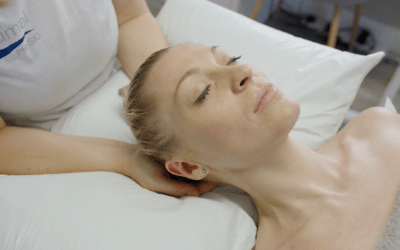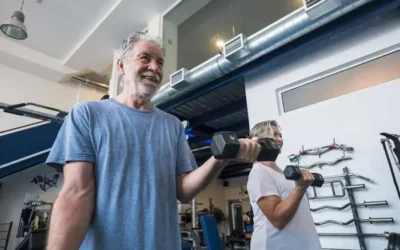Every golfer wants to add yards to their golf swing and reduce their handicap. I grew up watching Freddie Couples and just loved how smooth and consistent his swing was. All golfers would love a swing like his.
Golfers invest in equipment to add yards and reduce error with better technology. But do you invest in the most important piece of equipment, your body?
Do you spend time improving your mobility and flexibility?
Improving your strength and power to add more yards to your game?
Now is the perfect time to start so you are peak condition for the summer months to get the most out of your golf membership and show your mates just how good you can be.
The golf swing is a complex process that involves the whole body working together in unison. This allows for an efficient movement to create necessary torque for good clubhead speed and essentially a longer more accurate drive.
The main movement associated with the golf swing is rotation. If we target particular areas of the body where we can improve rotation, we can impact the mechanics of your swing. Sounds simple, and it’s maybe not as simple as that but it is often over complicated.
Rotation comes from the shoulders, hips and thoracic area. When the force of a swing can’t be transferred effectively the lower back often ends up taking the load. This is why back pain is the most common injury in golfers.
By targeting the Thoracic Spine (mid-back) and hips we can make fundamental changes to your golf swing. These two areas of the body are hugely important in creating power or ‘torque’ in the swing which directly impacts clubhead speed, leading to a long drive.
The Thoracic Spine:
The 12 segments of the thoracic spine make up the mid-back. This is commonly stiff amongst the office workers out there due to prolonged sitting and often poor posture. When you get to the range or that early tee time on a Saturday morning after a 40-50 hour week sat in front of your computer/laptop it’s no wonder you can be exposed to some common injuries.
Golfer’s tend to experience low back pain which can be directly associated with stiffness in the Thoracic Spine. The Lumbar Spine (lower back) is not made to rotate and can only generate 10 degrees of rotation at the best of times, so if your Thoracic Spine is stiff and loses the ability to fully rotate you can increase the load on the Lumbar Spine. The thoracic spine should be kept mobile to prevent back pain in everyday life, but if golf is your passion it becomes even more crucial!
The Hips:
Strength and mobility in the hips are vital for a good golf swing. Hip mobility is important in the back swing to allow the upper body to rotate fully to wind up in preparation to transfer energy to the upper limb.
Many people tend to try and gain power from their arms and shoulders, however, it is the hips rotating through the swing that generates the power. This wind-up phase builds kinetic (movement) energy that is then transferred from the lower limb into the upper limb throughout the different phases of the swing.
Here are 5 simple exercises that you can try to increase mobility and strength to improve your golf swing and reduce your injury risk.
(You can click on the images to see a video demonstration of each exercise)
Side Plank with rotation
Start in side plank, supported on your forearm with your elbow under your shoulder. Keep your feet together or place one foot slightly in front of the other and the body in a straight line. Bring your upper arm up, with your fingers towards the ceiling.
Reach one arm under the other armpit and against the floor and allow your thoracic spine to rotate. Then bring the arm back and reach to the other direction, towards the ceiling. Increase the chest opening by pressing through your hand on the floor.
Single Leg Glute bridge
Lie on your back with legs bent; one foot on the floor and one lifted upwards.
Squeeze your buttocks, roll your pelvis off the floor and straighten your hip. Don’t let the pelvis tilt to either side.
Lower the foot back on the floor and return to the starting position.
Thread needle
On all fours, hands under your shoulders and knees under your hips. Spine in neutral position.
Reach one arm under the other armpit and then bring the arm back and reach towards the ceiling.
Note: Focus on the movement from your thoracic spine.
Overhead squat
Start by standing with legs approximately hip-width apart or slightly wider and toes pointing forwards or slightly outwards.
Place a mini band around both wrists and straighten your arms into overhead position.
Slightly stretch the band and squat down; move your hips back and bend your legs. Press your knees outwards to keep toes, ankles, knees and hips aligned.
Maintain an upright position from the upper body to keep the mini band over your feet. Push back up to standing and straighten your knees and hips.
Hip 90/90
Start by sitting on the floor with both legs bent and feet flat on the floor at hip-width or wider.
Take support with your hands if needed.
Keep your feet in place and drop the news towards the floor on one side.
Return to middle and repeat towards the other side.
Start with smaller movement and increase the range of movement progressively.
Please don’t perform these if you have any pain and seek some professional advice if this is the case. If you just struggle with any of these exercise and need some additional guidance or support, then please give us a call so we can assess where your limitations are coming from and look to improve your movement and strength to improve your golf swing. This will help unleash your true potential and make best use of the thousands of pounds you have spent on golf equipment and your golf membership while also impressing your golfing buddies with your added distance to your golf swing.
You now have a little more insight into some of the anatomy of the golf swing and how you can benefit from improving your overall condition.
Try to build the exercises into your warm-up (yes a warm up, and not just rolling out the office, into the car and onto the 1st tee!) or on recovery days to help mitigate against some of the common golf-related injuries which could lead to weeks away from the course and your mates.
For more advice/guidance come and see one of our experienced Physiotherapists for a detailed golf specific examination. Call our admin team to find out more.
Optimal Physio – Clarkston and Largs – 0333 301 0205 – treatment@optimalphysio.co.uk – book online



0 Comments